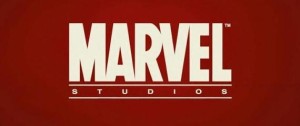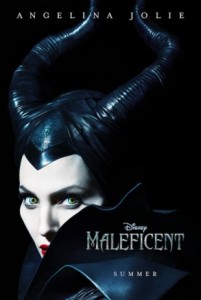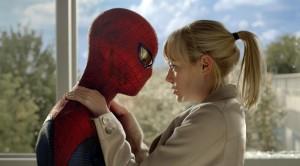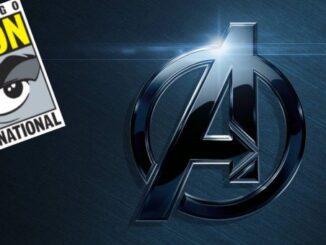 If there is one constant in Hollywood, it’s that money gets things done. So, if we want some idea where Hollywood is going in the future, we have to look at the highest grossing films of the past year. What secrets do they hold? What truths do they tell? Let’s find out.
If there is one constant in Hollywood, it’s that money gets things done. So, if we want some idea where Hollywood is going in the future, we have to look at the highest grossing films of the past year. What secrets do they hold? What truths do they tell? Let’s find out.
Below is the list of the top ten films of 2014, courtesy of Box Office Mojo:
So, what does this list tell us?
1. Comic book movies rule: We are 17 years into the reign of the comic book film, and the genre shows no sign of stopping. A quick look at the list shows that 50% of the films in the top ten originated in comic books. If we wanted to stretch the definition to include the Transformers and Planet of the Apes franchises, both of which were adapted into comics, the total number of comic book films goes up to 70%. There is a reason why articles predicting the death of the comic book film have disappeared–because the genre is stronger than it has ever been. And critics are going to have to stew in their own juices for a long time as there are comic book films scheduled all the way up until 2020.
 2. Marvel Studios, when it is on its game, cannot be beat: This is the second year in a row when Marvel Studios has had the number one film of the year. Next year, odds are that Avengers: Age of Ultron will make it three years in a row (if only because Star Wars: The Force Awakens will be released on December 18, giving it only 13 days to make an impact on the list). What’s most impressive is that Marvel won the box office battle this year with a film whose concept was unfamiliar to the general public (don’t forget, all the solo Avengers had at least one cartoon to their names before their film came out) starring a cast whose biggest names were in supporting roles or providing voices to the characters. If Marvel could make Guardians of the Galaxy a hit, then it should be smooth sailing for Doctor Strange, Black Panther, Captain Marvel and The Inhumans. Now facing the expiration of all of their stars’ contract doesn’t seem too daunting and their dominance over the next decade seems certain.
2. Marvel Studios, when it is on its game, cannot be beat: This is the second year in a row when Marvel Studios has had the number one film of the year. Next year, odds are that Avengers: Age of Ultron will make it three years in a row (if only because Star Wars: The Force Awakens will be released on December 18, giving it only 13 days to make an impact on the list). What’s most impressive is that Marvel won the box office battle this year with a film whose concept was unfamiliar to the general public (don’t forget, all the solo Avengers had at least one cartoon to their names before their film came out) starring a cast whose biggest names were in supporting roles or providing voices to the characters. If Marvel could make Guardians of the Galaxy a hit, then it should be smooth sailing for Doctor Strange, Black Panther, Captain Marvel and The Inhumans. Now facing the expiration of all of their stars’ contract doesn’t seem too daunting and their dominance over the next decade seems certain.
3. The LEGO Movie means (unfortunately)we will be seeing more films based on toys: When The LEGO Movie was announced, it was greeted by mock and ridicule. The idea that the film would be anything but a blatant cash grab, a low-quality offering that would, with Battleship, be the one-two punch that would kill the “toy film” genre for good.
What we got was an inventive take on the concept that turned out to be one of the best reviewed films of the year. The film’s success has spawned at least three more spin-offs/sequels, but I fear that it will also spawn of more studios and toy companies (~cough cough~Hasbro~~cough cough~~) to get more of their products on the big screen. Not all of these offerings will be written and directed by Phil Lord and Chris Miller, and most likely will come out more like Ouija than LEGO.
 4. Chris Pratt Superstar: It’s always fun that we can trace an actor’s leap into superstardom to a particular year or movie. Well, it’s likely that 2014 will be the year when Chris Pratt’s star went into supernova. To fans of his work as the frumpy Andy on Parks and Recreation, his casting as Peter Quill in Guardians of the Galaxy seemed to border on the disastrous. However, after seeing the film, it was hard to think of anyone else in the role. Pratt brought just the right amount of Han Solo-esque roguish charm to the role, albeit a kinder, gentler and more cuddly version of it. Add to that the fact he added a lovable sense of humanity to a plastic toy piece in The LEGO Movie, you have a star who can act and connect to audiences, no matter what the circumstances. This year’s Jurassic World should seal the deal on his mega stardom, and you can think back to this year as the start of it all when you are standing in line for the latest blockbuster he is in the 2020’s.
4. Chris Pratt Superstar: It’s always fun that we can trace an actor’s leap into superstardom to a particular year or movie. Well, it’s likely that 2014 will be the year when Chris Pratt’s star went into supernova. To fans of his work as the frumpy Andy on Parks and Recreation, his casting as Peter Quill in Guardians of the Galaxy seemed to border on the disastrous. However, after seeing the film, it was hard to think of anyone else in the role. Pratt brought just the right amount of Han Solo-esque roguish charm to the role, albeit a kinder, gentler and more cuddly version of it. Add to that the fact he added a lovable sense of humanity to a plastic toy piece in The LEGO Movie, you have a star who can act and connect to audiences, no matter what the circumstances. This year’s Jurassic World should seal the deal on his mega stardom, and you can think back to this year as the start of it all when you are standing in line for the latest blockbuster he is in the 2020’s.
5. Transformers: Age of Extinction proves that the Transformers franchise is indestructible and possibly immortal: It got the worst reviews of the franchise (so small feat because no Transformer film has ever earned a “Fresh” rating at Rotten Tomatoes). It replaced all of its human cast, typically the death knell for a franchise such as this. But Transformers: Age of Extinction still ended up as the fifth highest grossing film domestically and the number one grossing film internationally. Like some villain from a 1980s horror flick, the Transformers franchise simply refuses to die. If there is ever a nuclear Armageddon, after the bomb falls, humanity might be all but gone but cockroaches will still be scurrying around, Twinkies will still be edible, and there will be a new Transformers film every two to three years.
Why? Because the biggest stars exist only on hard drives–the CGI Autobots and Decepticons. People, especially those who do not live in America, love seeing giant robots beat the motor oil out of each other. The fact that these movies have a plot at all is just a nod to film conventions. They don’t need one. As a matter of fact, they might sell more tickets if they just start the robot on robot violence that much sooner.
So your greatest fear shouldn’t be terrorism or disease, it should be that in 50 years your grandchildren will be dragging you to see Transformers 27: The Heartbreak of Rust.
 6. Maleficent proves that Disney has yet another cash cow–the live-action fairy tale: It’s not like Disney needed another money-making franchise. They already have Marvel under their umbrella, Pixar too. They’d be making money of a Star Wars even if they didn’t decide to make more films, and they have the Indiana Jones franchise on standby. And their in-house animation studio looks like it has turned into a proven money maker as well. But, since Disney wants all the money, it has gone back to what originally put them on the map and created another steam of income for themselves, and it is working.
6. Maleficent proves that Disney has yet another cash cow–the live-action fairy tale: It’s not like Disney needed another money-making franchise. They already have Marvel under their umbrella, Pixar too. They’d be making money of a Star Wars even if they didn’t decide to make more films, and they have the Indiana Jones franchise on standby. And their in-house animation studio looks like it has turned into a proven money maker as well. But, since Disney wants all the money, it has gone back to what originally put them on the map and created another steam of income for themselves, and it is working.
Disney became Disney on the strength of Mickey Mouse and its animated adaptations of popular fairy tales–from Snow White all the way up to Frozen. Now, the studio has created a sub-franchise out of those fairy tales again by adapting them this time in live-action, each with a unique twist.
Maleficent might not have made the $1.3 billion worldwide that 2010’s live-action Alice in Wonderland made, but its $757 million worldwide is nothing to sneeze at. And it seems to be the first salvo in an all-out assault by Disney, as next year brings us Cinderella, which looks like a more conventional retelling but with an international cast that is bound to bump up overseas grosses, and in 2016, Alice in Wonderland: Through the Looking Glass will hit theaters, putting the genre on a one-a-year pace. The success of Cinderella will play heavily if Disney keeps this trend up, but if it is a hit, can we expect Belle and Ariel in live-action from 2017 on?
7. X-Men: Days of Future Past provided a fresh way to revitalize your franchise: Fox’s take on Marvel’ Merry Mutants appeared to be in a state of decline. It started back in 2006 with X-Men: The Last Stand, which was the highest grossing film of the series that point but poorly received by some fans and most critics. X-Men Origins: Wolverine was as poorly received, and started the trend of diminishing returns at the domestic box office. And while X-Men: First Class and The Wolverine were better received critically, domestic grosses continued to decline. The latter film bucked the trend for diminishing returns overseas, but surely the films Japan setting and international cast helped that out too.
So, the franchise was in need of a change. But instead of a square-one reboot, Fox welcomed back franchise starter Bryan Singer, took inspiration from a classic tale from the comics, and used time travel to give their franchise a shot in the arm. It also removed the less popular films in the franchise from film continuity, which made a lot of fans happy and curious as to what happened instead.
The result? X-Men: Days of Future Past became the second highest grossing X-film domestically and the highest grossing one internationally, both figures combined to make it the highest grossing X-film worldwide. People have a renewed sense of excitement in the franchise. Fan response to a leaked sizzle reel took the Deadpool movie from off the shelf onto 2016’s schedule. Casting announcements for X-Men: Apocalypse are garnering hits at film sites everywhere. Hugh Jackman is asked about the next Wolverine film at every press junket he attends. And the resurgence in film X-Mania has inspired Fox to listen to Gambit superfan Channing Tatum’s campaigning to play the character and resurrect the long dead film starring the character.
Sony, take note.
 8 & 9. Big Hero 6 once again proves that Disney’s in-house animation unit can hold its own with Pixar, and that Disney is not afraid to raid its subordinate companies for ideas: While it might not have been then cultural phenomenon that was last year’s Frozen, and Pixar took a year off in 2014, Big Hero 6 is yet more proof that Disney’s in-house computer animation unit can match the quality of Pixar’s step for step. Granted, this all started when Pixar’s John Lasseter took over the reigns of all of Disney’ animation, but the track record is still impressive.
8 & 9. Big Hero 6 once again proves that Disney’s in-house animation unit can hold its own with Pixar, and that Disney is not afraid to raid its subordinate companies for ideas: While it might not have been then cultural phenomenon that was last year’s Frozen, and Pixar took a year off in 2014, Big Hero 6 is yet more proof that Disney’s in-house computer animation unit can match the quality of Pixar’s step for step. Granted, this all started when Pixar’s John Lasseter took over the reigns of all of Disney’ animation, but the track record is still impressive.
A concerning side effect of all this is the fact that Disney took the concept from Marvel (It was loosely based on a Marvel Comic book), pretty much shut Marvel out of the creative process, and decided to make the film the way they wanted it. I thought it turned out great, but that’s besides the point. Comic fans have been operating under the idea that Marvel had free reign when it came to its characters, and nothing could be done without their control of it. This proves that wrong. On the plus side, there is a lot of Marvel IP that would work well as an animated film. But Marvel is, by now, a proven quantity when it comes to putting its IP on the screen. Any time that IP is taken away from them, even if it is by their corporate parent, it becomes an unsure commodity. Let’s hope that if Disney does this again, it turns out more like Big Hero 6 and doesn’t take a turn towards the Dolph Lungren Punisher film.
10. Sony’s reaction to Amazing Spider-Man 2 shows how dysfunctional Hollywood in general and the studio in particular really are: We didn’t need a cyberhack to know that Sony might not be all that smart when it comes to its Spider-Man license. After all, studio meddling ruined Spider-Man 3 and drove Sam Raimi away from Spider-Man 4. So there is a precedent for Sony bollockings up the works when it comes to Spidey.
However, Sony didn’t learn its lesson from that experience and decided to make Amazing Spider-Man 2 another Spider-Man 3. Instead of letting the positively received reboot grow naturally and breathe just a little bit, Sony once again top loaded the second film with villains in order to feed their planned Sinister Six spinoff. The result was that villains didn’t have enough screen time to become well developed characters yet the time they were on screen took away necessary moments from the story elements that were introduced in the first film. What we got was sort of like a Cliff’s Notes version of a film than a real film.
 Yet, the film made $708 million worldwide, and, judging by the equation that a film is truly a success if it doubles it production budget and ASM2 having a a production budget between $200 and $255 million, the film was successful by at least $200 million. Only not to Sony, who was mistakenly expecting an Avengers/Iron Man 3 $1 billion+ payday for the film. And since the film wasn’t as successful as they thought it should be, Sony went into panic mode.
Yet, the film made $708 million worldwide, and, judging by the equation that a film is truly a success if it doubles it production budget and ASM2 having a a production budget between $200 and $255 million, the film was successful by at least $200 million. Only not to Sony, who was mistakenly expecting an Avengers/Iron Man 3 $1 billion+ payday for the film. And since the film wasn’t as successful as they thought it should be, Sony went into panic mode.
This panic played out throughout the leaked Sony e-mails, and the studio heads come off with the same mix of arrogance and stupidity that are the trademark of satiric interpretations of Hollywood executives found in books and movies. Marvel’s Alan Fine gives a list of problem points with ASM 2 while that film was in script stage to Sony, all of which were blithely ignored. (What were they? Pretty much everything film critics said was wrong with the film–it being too dark, too many villains, it being repetitive and too long). In order to make Sinister Six hit, they are willing to forgo trying to build a story around the numerous untapped, popular and more realistic members Spidey’s rogues gallery in order to try and bring an obscure giant alien monster named Gog into the Spidey film universe. While development on the Sinister Six is going on, fielding ideas on how to reboot the entire franchise–again. Being all gung ho on partnering with Marvel Studios to add heat to Spidey but then rankling at the terms Marvel offers.
The go-to, knee jerk solution to this problem many fanboys have in circumstances like this is to implore Disney to buy the rights back from Sony. I think the best path for Sony is to listen to those fanboys






2014 In Review: What The Top Ten Grossers Say About The State of Cinema:
If there is one constant in Hollywo… http://t.co/d3tGDmCQxe
#5 just makes me sigh so hard. People, as a civilization we are better than this…
And Maleficent sucked (story line). Are Disney character-remakes and Transformers grossing due to franchise branding? How does Maleficent and Alice in Wonderland compare to the live action version of the Jungle Book from the 90’s? Could Marvel’s success in comic book to movies have given these Disney remakes new life? Great article, Rich. Keep up the good work. :)
This was one of Bill’s, but I’ll pass along the back pat. :)
Tom Stroud liked this on Facebook.
Just watched Guardians….disappointed.
I think Marvels hard work has paid off and why it’s world building will be replicated it will be hard to be duplicated…
Bob Ballentine liked this on Facebook.